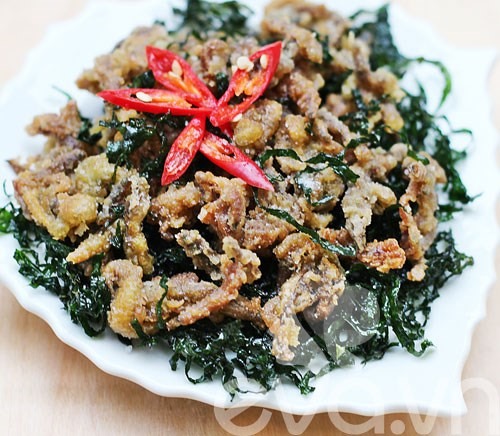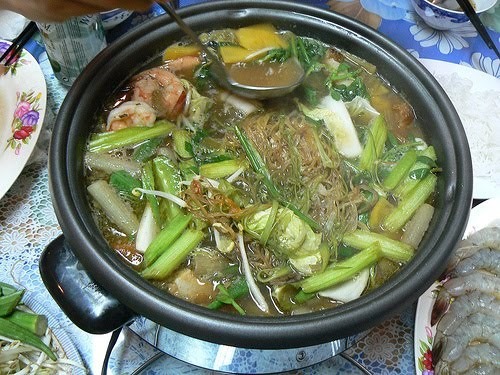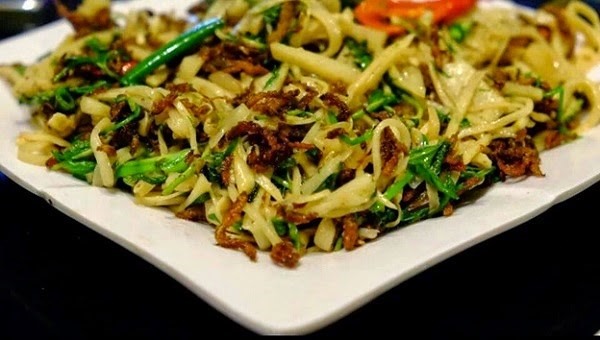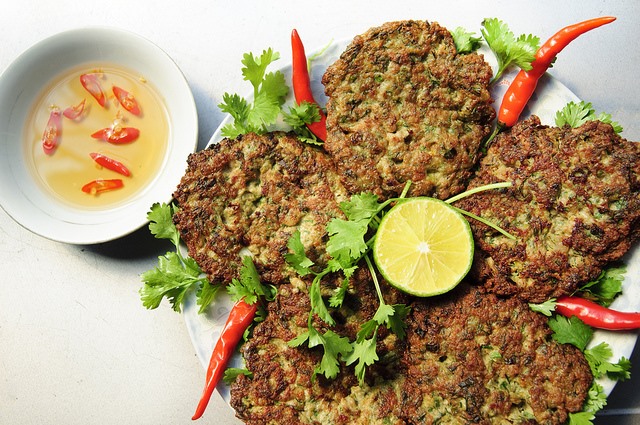 Life & Style
Life & Style

 |
| Master chef: Hanoian Nguyễn Thị Huyền (known as Huyền "Rươi") makes chả rươi. |
Foodwise
By Hà Nguyễn
Every late Autumn, when sunbeams gently light up trees, turning them yellow, and light cold front approaches in the north, the rươi (seaworm) season begins, as it has done for a thousand years.
In Hà Nội, Nguyễn Thị Huyền, also known as Huyền "Rươi", has been famous for years, with generations of residents having enjoyed her chả rươi (fried seaworm cake).
Huyền said that rươi (scientifically named Nereididae, mainly lives in brackish water fields in Hải Dương and Nam Định provinces) can be cooked many ways, citing the rươi kho niêu đất ( seaworm braised in a small clay pot), mắm rươi (fermented seaworm), and other dishes as example.
But she has stuck to selling seaworm cakes, having carved out a niche for herself.
Different from other seaworm sellers in downtown Hà Nội, like Hàng Chiếu, Lò Đúc and Gia Ngư, who make and sell dishes all year round by freezing the worms, Huyền cooks and sells her dish only during the season, which usually falls between the ninth and 11th lunar months.
She told Việt Nam News that in the early 80s, she’d earned a living by travelling to Hải Dương, Hải Phòng and Nam Định provinces to buy fresh seaworms, which was very cheap at that time, to sell them in Hà Nội markets.
“Every day I sell a dozen baskets or hundreds of kilos of worms. Thanks to the trade, I was able to earn a stable income and raise my six children, although earning a decent income was very difficult then (when the country was very poor).”
She did well until the early 90s when she fell ill and suffered for a long time.
“I was not able to travel to those provinces to buy seaworms. One of my close friends advised me to make seaworm cakes and sell them instead. I agreed because I’d learnt how to make tasty and delicious rươi cakes from my trading counterparts in Hải Dương and Hải Phòng years ago.
“I decided to sell seaworm cakes on the corner of Hòe Nhai Street in Hà Nội’s Old Quarter, where I stayed,” said Huyền, adding that she opens her shop at 11am and closes it at between six and seven in the evening.
“My dish sells very well because I know how to choose fresh seaworm, the most important factor, and also mandarin peels,” she said.
Huyền said she orders mandarin peels from the northern province of Lạng Sơn, which is the fruit’s native place. Other sellers use peels imported from the south or China, and this might be making a difference in taste, she feels.
“Whether the chả rươi is tasty or not defends a lot on the mandarin peels. The ones I get from Lạng Sơn are a main ingredient in giving my dish a special flavour, compared to others,” she said.
The dish’s ingredients are fresh worm, dried onion, dill, minced pork, mandarin peel, egg, pepper, fish sauce, and a little of chilli. These ingredients are mixed and stirred well before being scooped into a big spoon and fried in a pot of oil.
Culinary expert Lê Kim Chi of the Quán Ăn Ngon Restaurant Chain said she admired and appreciated Huyền for preserving a traditional food of the old Hà Nội.
Phạm Trọng Thể of Hà Nội’s Hai Bà Trưng District said he was addicted to Huyền’s seaworm cakes.
“During the seaworm season, I ask my son to drive the five kilometres from my house to buy her cakes. All of us love the dish, particularly during winter days.”
Thể said many of his friends in the northern provinces of Cao Bằng and Lạng Sơn also ask him to send Huyền’s seaworm cakes to them.
Herbalist Nguyễn Văn Hòa of the National Hospital of Traditional Medicine said seaworm stir-fried with củ niễng (tuberous traditional herb) is very good for the heart. He said it cools down the body heat and is also a diuretic.
“Seaworm is also rich in calcium and folic acid, and can help patients with weak digestion and blood pressure,” Hòa said. — VNS
 |
| Munchy: Rươi fried with salt is favoured by many old people. |
 |
| Soupy: The rươi hot pot seems to be popular among young people. |
 |
| Healthy recipe: Apart from chả rươi, rươi fried with củ niễng is said to be good for health, heart ailments in particular. |
 |
| Chef’s special: A plate of Huyền’s chả rươi. Photos dulichvietnam.com |




